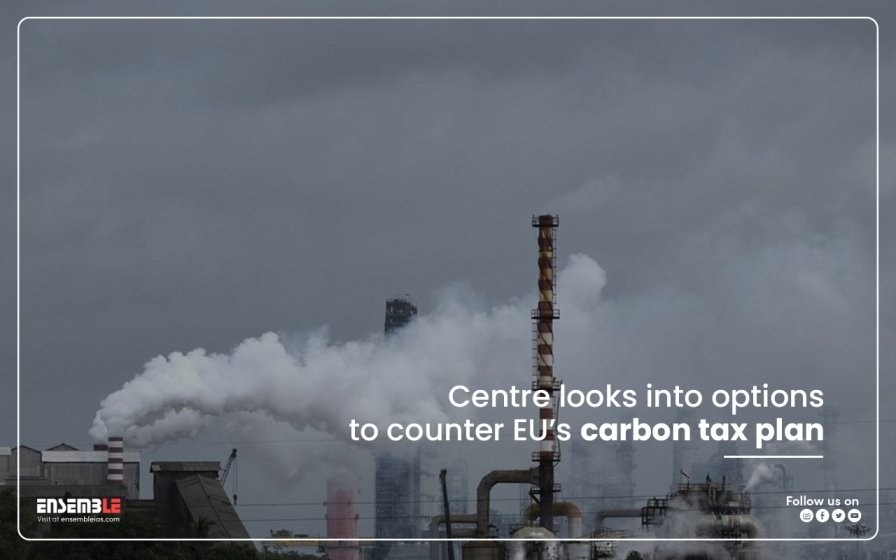Context- The Commerce Ministry is exploring various options to cope with the European Union’s decision to introduce a Carbon Tax (CBAM), including retaliatory tariff measures, a challenge at the World Trade Organization, and measures to help smaller Indian exporters.
The EU plans to introduce a Carbon Border Adjustment Mechanism (CBAM) that will entail a monitoring mechanism for imports from producers deploying non-green technologies starting this
October and a tax levy from January 2026.
This is likely to hit Indian metal and engineering products’ exports to the EU.
Addressing this challenge is one of the top agenda and several options are to be examined by Commerce Department at a meeting hosted by the engineering goods exporters body, EEPC India.
About CBAM
CBAM was introduced by the EU as part of a larger European Green Deal in 2019.
CBAM is part of the EU’s ambition to curb climate change ahead of COP26 IN Glasgow.
Aim-
1. To address carbon leakages. (Carbon leakages- a company shifting to a country where less strict environmental regulation
2. Encourage partner countries to establish carbon pricing policies to fight climate change.
3. Target imports of carbon-intensive products.
Design to function in parallel with the EU’s Emissions Trading System (EU ETS).
CBAM is constructed to treat foreign producers in a manner equivalent to domestic producers.
It will apply to carbon-intensive sectors highly exposed to international trade-
1. aluminium,
2. cement,
3. iron &steel,
4. electricity,
5. fertilisers
6. hydrogen.
Importer must make a CBAM declaration with the number of goods, embedded emissions and certificates for payment of the carbon import tax.
CBAM does not apply to the four non-EU members that include the European Economic area – Liechtenstein, Iceland, Norway, and Switzerland.
Impacts on India
Exports-
- In 2022 EU account for 11.2% of India’s total global trade. India’s export to the EU was about 41.3 billion dollars in 2020-21. The proposed tax has raised concerns among Indian metal producers.
India’s total export of CBAM products to the EU is 8.22 billion dollars.
Disguised restriction on international trade –
- This could lead to undermined multilaterally agreed principles of equity and common but differentiated responsibility and respective capabilities. Market distortions and negative impacts companies with larger greenhouse gas footprint, potentially shifting their growth and developments.
Collection of tax-
- The imposition of taxes on imports, to create preferential treatment of domestic products
India’s Address the potential impact of EU’s Carbon border tax
- Negotiating with EU-Engage in discussion with the EU to negotiate an exemption or reduced the rate tax for Indian manufacturers.
- Developing carbon pricing mechanism- Develop of domestic carbon pricing mechanism to encourage companies to reduce their emissions.
- Promoting renewal of energy
- Investment in carbon capture technology -To reduce carbon emissions from manufacturing processes through carbon capture and storage technology.
Other initiative measures are taken by the EU to curb carbon emission
- Fit for 55-EU’s target of reducing net greenhouse gas emissions by at least 55% by 2030.
- EU ETS- set up in 2005, the world’s first international trading system.it is in phase 4. It is a “cap and trade “scheme where a limit is placed on the right to emit specific pollutants over a geographical area and company can trade emission rights within that area.




